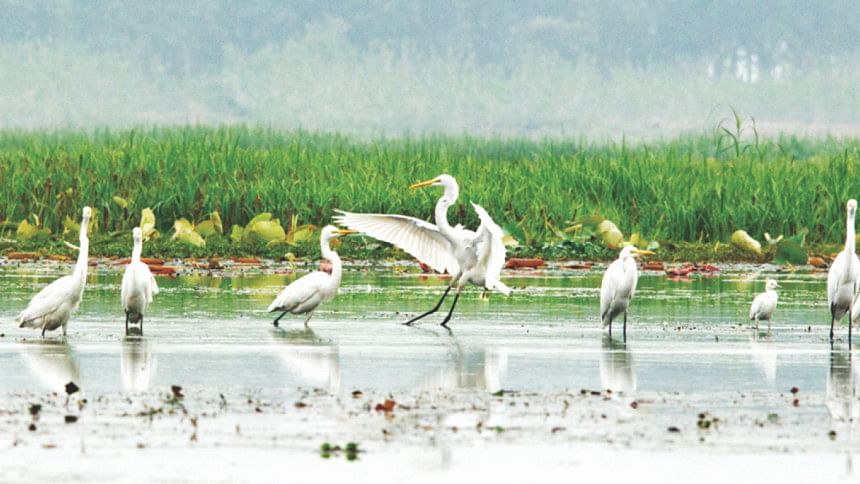Coming to Birding

I became interested in birds at a relatively older age without any formal training. Many colleges and universities today offer ornithology courses and labs, but my learning has been from trial and error or from others in the field.
It all started with the trees my father had planted while creating a plantation. They were his life's work. After he passed away I started to document them using photographs. Soon I was photographing nature and landscape around the trees. Next I wanted to include creatures to complete the picture of the environment he had created. I started with insects, butterflies and squirrels and was eventually drawn to birds. Before I knew it, I was hooked.
Then came a trip to Sundarban. In the company of expert guides, I learned about special birds of Bangladesh: for example, the nine types of kingfishers present in Sundarban. I also saw a masked finfoot, a rare duck found in Sundarban and in the "wanted" list of dedicated birders.
But I missed the photographic opportunity of the finfoot because my lens was inadequate. So I rented - and later bought - a 150-500mm lens which opened new territory. Wandering with this lens I discovered the astonishing variety of birds in Bangladesh. I found many in or around Dhaka, including the National Botanical Garden (Mirpur), Savar and Purbachal.
I applied all my photographic knowledge – both technical and aesthetic – to photographing birds. Encouragement and appreciation from friends and family inspired me.
I also learned from the birders of Bangladesh Bird Club which has played an important role in the understanding and preservation of our avifauna. I grew to appreciate their dedication and discipline. They have advanced our knowledge by diligent field work while teaching local communities about the environment.
Several books helped me. Among them are Encyclopedia of Flora and Fauna of Bangladesh (Vol. 26, Birds) edited by Enam ul Haque et al, Photographic Guide to Birds of Bangladesh by Ronald Halder, and A Guide to Wildlife by Monirul Khan.
I gradually learned where to look for birds and how to observe and (hopefully) identify them. I learned to be quiet, stay still or move slowly, and always be prepared with my camera, for birds are not generous with second chances.
While I have picked up some skills, I have failed in utilizing bird sounds. Perhaps because I have not tried hard enough to memorize them, I am unable to identify bird calls. Compounding the problem is the ability of some birds to call in several ways and even mimic other birds. So I am often frustrated when I hear a cacophony of birdsongs in a forest but cannot identify them.
Many birders live and die by the list of birds they have observed. They are called "listers" and their great joy is seeing a bird they had not seen before (a "lifer"). A rare bird or one led astray by a storm makes their day.
My pleasure, however, is in making a good photograph. At the end of the day I am a photographer, not a scientist. So a well-composed, well-lit photograph of a common bird excites me more than a poorly composed photograph of a rare bird, and I prefer a beautiful common bird to a bland looking exotic one.
www.facebook.com/tangents.ikabir.

 For all latest news, follow The Daily Star's Google News channel.
For all latest news, follow The Daily Star's Google News channel. 



Comments